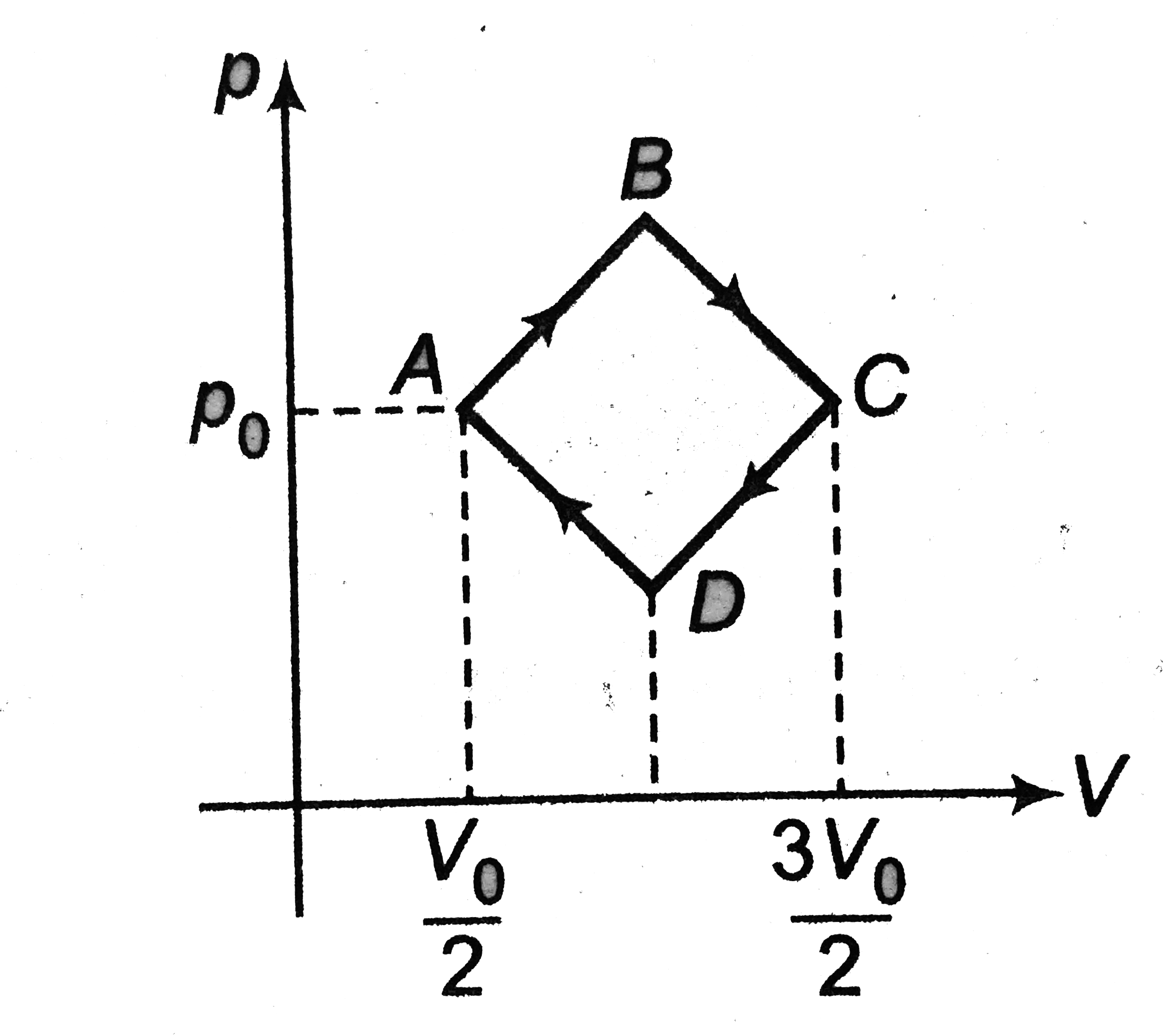Complete Solutions to Exercise 21.4 of chapter LAWS OF THERMODYNAMICS of Class 11 book with complete answers and questions
| Class 11 | PHYSICS |
| Chapter | LAWS OF THERMODYNAMICS |
| DC PANDEY | Exercise 21.4 |
| Number Of Questions | 8 |
| Academic Year | 2023-24 |
Carnot engine takes one thousand kilo calories of heat from a reseervoir at `827^@C` and exhausts it to a sink at `27^@C`. How, much work does it perform? What is the efficiency of the engine?
04:08View SolutionOne of the most efficient engines ever developed operated between 2100K and 700K. Its actual efficiency is 40%. What percentage of its maximum possible efficiency is this?
02:09View SolutionIn a heat engine, the temperature of the source and sink are 500 K and 375 K. If the engine consumes `25xx10^5J` per cycle, find(a) the efficiency of the engine, (b) work done per cycle, and (c) heat rejected to the sink per cycle.
04:26View SolutionA Carnot engine takes `3xx10^6cal`. of heat from a reservoir at `62^@C`, and gives it to a sink at `27^@C`. The work done by the engine is
02:25View SolutionThe efficiency of a Carnot cycle is `1//6`. If on reducing the temperature of the sink by `65^@C`, the efficiency becomes `1//3`, find the source and sink temperatures between which the cycle is working.
03:12View SolutionRefrigerator A works between `-10^@C` and `27^@C`, while refrigerator B works between `-27^@C` and `17^@C`, both removing heat equal to 2000J from the freezer. Which of the two is the better refrigerator?
05:45View SolutionA refrigerator has to transfer an average of 263J of heat per second from temperature `-10^@C` to `25^@C`. Calculate the average power consumed, assuming no enegy losses in the process.
02:47View Solutionn moles of a monoatomic gas are taken around in a cyclic process consisting of four processes along ABCDA as shown. All the lines on the p-V diagram have slope of magnitude `p_0//V_0`. The pressure at A and C is `p_0 and the volumes at A and C are `V_0//2` and `3V_0//2`, respectively. Calculate the percentage efficiency of the cycle.
 18:47View Solution
18:47View Solution
Exercise 21.4 questions and complete solutions for chapter LAWS OF THERMODYNAMICS of DC PANDEY PHYSICS (HINGLISH) of Class 11
All Exercises from DC PANDEY Class 11 PHYSICS LAWS OF THERMODYNAMICS
- Example
- Example Type 1
- Example Type 2
- Example Type 3
- Exercise 21.1
- Exercise 21.2
- Exercise 21.3
- Exercise 21.4
- Level 1 Assertion And Reason
- Level 1 Objective
- Level 1 Objective Questions
- Level 1 Subjective
- Level 2 More Than One Correct
- Level 2 Passage I
- Level 2 Passage II
- Level 2 Single Correct
- Level 2 Subjective
- Miscellaneous Example
